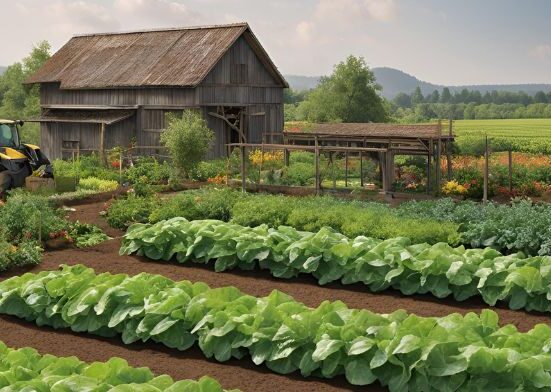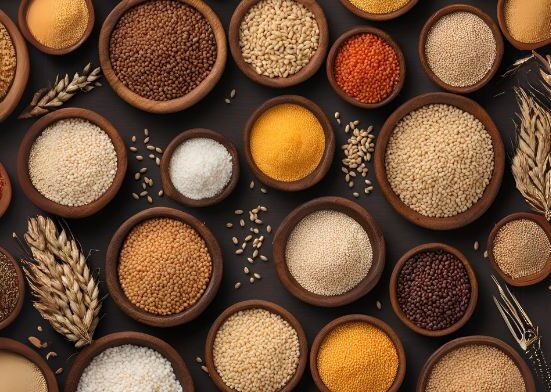Charcuterie boards have taken the culinary world by storm. They’re no longer just simple meat-and-cheese platters—they’ve evolved into edible art, showcasing textures, flavors, colors, and seasonal delights. Whether you’re hosting a party, planning a romantic evening, or just craving a gourmet snack, crafting your charcuterie board is both satisfying and surprisingly simple. And here at Nuts for Charcuterie, we believe nuts deserve a starring role in every board! In this guide, we’ll walk you through the essentials of building the perfect charcuterie board—from foundation to flourish—while highlighting why nuts are the ultimate upgrade for flavor, balance, and nutrition.
What Is a Charcuterie Board?
 At its core, a charcuterie board is a curated collection of cured meats, cheeses, fruits, nuts, spreads, and bread. Rooted in French culinary tradition, the word “charcuterie” referred initially to prepared meat products, particularly those based on pork, such as prosciutto, salami, and pâté. Today, charcuterie boards reflect global tastes and personal creativity. They can be rustic or refined, minimal or overflowing. The key is contrast pairing soft with crunchy, sweet with salty, and mild with bold. It’s a delightful way to satisfy everyone’s palate in a single charcuterie board ideas spread.
At its core, a charcuterie board is a curated collection of cured meats, cheeses, fruits, nuts, spreads, and bread. Rooted in French culinary tradition, the word “charcuterie” referred initially to prepared meat products, particularly those based on pork, such as prosciutto, salami, and pâté. Today, charcuterie boards reflect global tastes and personal creativity. They can be rustic or refined, minimal or overflowing. The key is contrast pairing soft with crunchy, sweet with salty, and mild with bold. It’s a delightful way to satisfy everyone’s palate in a single charcuterie board ideas spread.
The Growing Trend of DIY Charcuterie for Parties and home Gatherings
The growing trend of DIY charcuterie for parties and home gatherings is transforming how people entertain. More hosts are crafting personalized boards filled with an artful mix of cured meats, cheeses, nuts, fruits, and dips, making gatherings feel warm and creative. This hands-on approach allows individuals to tailor selections to their guests’ tastes, elevating casual get-togethers into stylish, memorable experiences. DIY charcuterie encourages social interaction and culinary exploration, making it a charcuterie boards popular, fun, and visually appealing centerpiece for celebrations of all kinds.
Why Nuts are a Must-have: Flavor, Texture, and Nutritional Balance
Nuts are a must-have in any diet thanks to their rich flavor, satisfying texture, and impressive nutritional profile. Their natural crunch adds depth and contrast to meals and snacks, elevating the eating experience. Beyond their taste, nuts offer a balanced source of healthy fats, protein, fiber, vitamins, and minerals, which support heart health, brain function, and sustained energy. Whether sprinkled on salads, blended into sauces, or enjoyed on their own, nuts offer a delicious and wholesome way to enhance both flavor and nutrition in everyday meat and cheese board eating.
Why Nuts Are Essential to Every Charcuterie Board
 Nuts are a must-have element on any charcuterie board, offering both texture and flavor that elevate the entire experience. Their natural crunch adds a satisfying contrast to soft cheeses, cured meats, and juicy fruits. Whether it’s the buttery richness of cashews, the earthy depth of walnuts, or the smoky snap of almonds, nuts bring a dynamic balance that rounds out the board. They also help cleanse the palate between bites, making them a perfect transition from savory to sweet. Beyond taste and texture, nuts add visual appeal with their varied shapes and tones, enhancing the board’s rustic orchard tree charm.
Nuts are a must-have element on any charcuterie board, offering both texture and flavor that elevate the entire experience. Their natural crunch adds a satisfying contrast to soft cheeses, cured meats, and juicy fruits. Whether it’s the buttery richness of cashews, the earthy depth of walnuts, or the smoky snap of almonds, nuts bring a dynamic balance that rounds out the board. They also help cleanse the palate between bites, making them a perfect transition from savory to sweet. Beyond taste and texture, nuts add visual appeal with their varied shapes and tones, enhancing the board’s rustic orchard tree charm.
They also accommodate a variety of dietary requirements, such as those of guests who are plant-based or gluten-free. Rich in healthy fats, protein, and nutrients, nuts are more than just filler — they’re a flavorful, functional staple. Simply put, no charcuterie board is complete without the wholesome crunch of nuts.
Choosing the Right Board and Tools
Creating an impressive charcuterie board starts with selecting the proper foundation and tools. The board itself sets the tone—wooden boards offer rustic charm, while slate or marble boards bring elegance and a cool surface for cheeses. Select a size that suits your gathering: a small board for intimate settings or a larger one for parties. Ensure it’s food-safe and easy to clean. Equally important are the tools: a set of cheese knives for soft, semi-soft, and hard cheeses is essential. Small tongs, spreaders, and toothpicks help guests serve themselves neatly and efficiently.
Tiny bowls are perfect for jams, honey, or olives, keeping wet items from soaking into dry ones. Don’t forget ramekins for nuts and dips. A well-chosen board, paired with the right tools, not only enhances the presentation but also makes serving and enjoying the charcuterie experience seamless, organized, and visually delightful.
- Wooden cutting boards (classic and rustic)
- Slate or marble slabs (chic and cool)
- Large platters or trays
- Lazy Susans or tiered trays for dynamic presentation
Step-by-Step Guide to Making the Perfect Charcuterie Board
Creating a stunning charcuterie board is easier than you think! This step-by-step guide walks you through everything you need to craft a delicious and visually appealing spread. Begin by selecting the ideal board or platter as your foundation. Next, choose a balanced assortment of cured meats, including prosciutto, salami, and chorizo. Pair them with a variety of cheeses—soft, hard, aged, and creamy—for a rich flavor How To Freeze Peaches: Easy Steps For Freshness contrast.
Add fresh and dried fruits, nuts, olives, and pickles to introduce a sweet and tangy flavor. Use small bowls for dips, jams, or honey, and pair them with artisan crackers or crusty bread for added texture. Arrange items in clusters for visual interest, alternating colors and shapes to create a visually appealing display. For a lovely ending, garnish with edible flowers or herbs. Whether you’re hosting a party or enjoying a cozy night in, this guide ensures your charcuterie board is both mouthwatering and memorable. Perfect for any occasion, big or small!
Choose a Theme or Occasion
Choosing a theme or occasion is the first step in creating a memorable charcuterie board experience. Whether you’re planning a romantic date night, a festive holiday gathering, a rustic picnic, or a chic wine tasting, the theme helps guide your selection of ingredients, presentation style, and overall mood. It adds personality and intention to your board—transforming simple snacks into a visually appealing culinary centerpiece. For example, a Valentine’s board might feature heart-shaped cheeses and strawberries, while a fall-themed board could showcase apples, aged cheddar, and warm-toned garnishes.
Aligning your board with the occasion not only enhances visual appeal but also makes your choices feel thoughtful and cohesive. From colors and textures to flavors and pairings, a well-chosen theme brings harmony and charm to your creation. So start by considering your event, season, or mood—it’s the foundation that elevates your charcuterie from casual to what to put on a charcuterie board unforgettable.
Start with the Meats
Begin by selecting a variety of high-quality meats to create a flavorful foundation for your charcuterie board. Select a variety of textures and flavors, such as salty prosciutto, spicy chorizo, and smoky salami. These savory options provide decadent, satisfying bites and pair beautifully with cheeses, nuts, and fruits. Arrange the meats thoughtfully—folded, rolled, or sliced—to add visual appeal and easy access. Starting with meats ensures your charcuterie board offers a delicious, protein-packed base that invites charcuterie plate guests to explore the perfect balance of flavors and What Is an Orchard textures.
Add the Cheeses
Adding cheeses to your charcuterie board is where flavor and texture truly come alive. Select a variety of cheeses—soft, hard, creamy, and aged—to create a delightful blend that caters to diverse tastes. Popular options include creamy Brie, sharp cheddar, tangy goat cheese, and nutty Gouda. Arrange them thoughtfully with small cheese knives or spreaders for easy serving. Don’t forget to label each cheese to guide your guests. The cheeses form the heart of your board, perfectly complementing nuts, fruits, and charcuterie for an irresistible charcuterie platter experience.
Highlight the Nuts (Our Favorite Part!)
Nuts are the heart and soul of any great charcuterie board—our absolute favorite part! They add a perfect crunch, rich texture, and delightful flavor that complements cheeses, meats, and fruits beautifully. From roasted almonds and crunchy pecans to salty cashews and buttery walnuts, nuts bring variety and depth to every bite. They also offer a satisfying contrast that keeps your palate excited. Whether sprinkled casually or thoughtfully arranged, nuts elevate the entire board, making each tasting experience more indulgent and cheese for charcuterie board memorable. Truly, nuts are the star of the show!
Add Fresh and Dried Fruits
Adding fresh and dried fruits to your meals or snacks instantly boosts flavor, texture, and nutrition. Fresh fruits bring vibrant juiciness and natural sweetness, while dried fruits add chewy richness and concentrated taste. Together, they create a delightful contrast that enhances salads, cereals, baked goods, and charcuterie boards. Beyond their delicious appeal, fruits provide essential vitamins, fiber, and antioxidants that support health and well-being. Whether as a simple snack or a creative ingredient, incorporating cheese charcuterie board both fresh and dried fruits makes any dish more colorful, wholesome, and satisfying.
Include Spreads and Dips
Offer both sweet and savory:
- Sweet: Honey, fig jam, raspberry preserves
- Savory: Olive tapenade, grainy mustard, pesto
- Nut butter: Almond or cashew butter for dipping fruit or pairing with cheddar
Serve in small bowls with tiny spoons.
Offer Bread and Crackers
Provide vehicles for your spreads and toppings:
- Sliced baguette (plain or toasted)
- Crostini
- Whole grain crackers
- Seeded crisps
- Gluten-free options (rice crackers, nut thins)
The texture is key—mix crunchy, airy, and hearty options to create a well-rounded experience.
Finish with Garnishes and Extras
Small details complete your board:
- Pickles and olives: Cornichons, Castelvetrano olives, stuffed olives
- Fresh herbs: Rosemary, thyme sprigs, or edible flowers
- Chocolate: Dark chocolate squares or chocolate-covered almonds
- Cheese labels or flags for a touch of sophistication
Pro Tips for Styling Your Board
- Start big, end small: Place large items, such as cheese and ramekins, at the beginning. Fill in with smaller items, such as nuts and berries.
- Odd numbers look best: Use odd numbers of cheeses, meats, and nut varieties for visual harmony.
- Keep it tight: Boards look more elegant when items are nestled close together.
- Use color contrast: Place green grapes near red salami and bright berries beside white cheese.
- Balance flavors: Every area should have a combination of salty, sweet, creamy, and crunchy elements.
Seasonal Charcuterie Board Ideas Featuring Nuts
 Celebrate every season with beautifully crafted charcuterie boards that spotlight the flavor, crunch, and versatility of nuts. Whether it’s the warmth of roasted almonds in autumn, the sweet charm of candied pecans in winter, or the fresh burst of pistachios in spring and summer, nuts elevate any charcuterie spread with texture and taste. Pair walnuts with soft cheeses and dried fruits for a cozy winter board, or combine cashews, goat cheese, and berries for a vibrant summer presentation. Add toasted hazelnuts, dark chocolate, and aged cheeses for a decadent, indulgent treat year-round.
Celebrate every season with beautifully crafted charcuterie boards that spotlight the flavor, crunch, and versatility of nuts. Whether it’s the warmth of roasted almonds in autumn, the sweet charm of candied pecans in winter, or the fresh burst of pistachios in spring and summer, nuts elevate any charcuterie spread with texture and taste. Pair walnuts with soft cheeses and dried fruits for a cozy winter board, or combine cashews, goat cheese, and berries for a vibrant summer presentation. Add toasted hazelnuts, dark chocolate, and aged cheeses for a decadent, indulgent treat year-round.
Seasonal herbs, fruits, cured meats, and spreads can complement the nut varieties, creating a harmonious blend of colors and flavors. Perfect for gatherings, holidays, or casual entertaining, seasonal charcuterie boards featuring nuts offer endless opportunities for creativity and flavor combinations, making them a delicious and eye-catching centerpiece for any occasion.
Fall Harvest Board
- Cheddar, Brie, and blue cheese
- Sliced apples and pears
- Candied pecans and spiced almonds
- Fig jam and honey
- Pumpkin seeds and dried cranberries
Winter Holiday Board
- Aged Gouda, goat cheese log, cranberry cheddar
- Cured ham and Genoa salami
- Pistachios, roasted walnuts, and chocolate-covered almonds
- Pomegranate seeds and sugared cranberries
- Rosemary sprigs for festive flair
Spring Garden Board
- Fresh goat cheese, herbed Havarti, Camembert
- Radishes, strawberries, and snap peas
- Honey-roasted cashews and pistachios
- Raspberry preserves
- Edible flowers and microgreens
Summer Picnic Board
- Mozzarella pearls, cheddar cubes, pepper jack
- Grapes, watermelon chunks, cherry tomatoes
- Smoked almonds, lime chili cashews
- Basil pesto and peach jam
- Light crackers and crusty bread
Charcuterie Board for Special Diets
 Creating a charcuterie board for special diets is a delicious and inclusive way to cater to all guests, regardless of dietary restrictions. Whether you’re accommodating gluten-free, vegan, keto, paleo, or dairy-free lifestyles, a thoughtfully crafted board can offer something for everyone. Use a variety of ingredients, such as nut-based cheeses, gluten-free crackers, plant-based meats, fresh vegetables, low-carb dips, and sugar-free dried fruits. Swap traditional cured meats for nitrate-free or leaner protein options for a healthier touch.
Creating a charcuterie board for special diets is a delicious and inclusive way to cater to all guests, regardless of dietary restrictions. Whether you’re accommodating gluten-free, vegan, keto, paleo, or dairy-free lifestyles, a thoughtfully crafted board can offer something for everyone. Use a variety of ingredients, such as nut-based cheeses, gluten-free crackers, plant-based meats, fresh vegetables, low-carb dips, and sugar-free dried fruits. Swap traditional cured meats for nitrate-free or leaner protein options for a healthier touch.
Incorporate allergy-friendly treats, colorful fruits, and healthy fats, such as olives and avocado slices, to add balance and flavor. Label each section clearly for ease and confidence. With creativity and care, a special diet charcuterie board can be just as indulgent, festive, and satisfying as a traditional spread—perfect for gatherings where health-conscious eating and delicious snacking meet. It’s a celebration of variety, nourishment, and inclusivity, all beautifully arranged on a single board.
Vegetarian
- Skip meats and add more cheeses, nuts, legumes, and roasted vegetables
- Nut choices: tamari almonds, maple pecans, chili cashews
Vegan
- Vegan cheeses (nut-based)
- Hummus or cashew spreads
- Olives, pickles, and lots of roasted/smoked nuts
- Fruit, veggies, and nut-based crackers
Gluten-Free
- Rice crackers, seed crackers, veggie sticks
- Use gluten-free meats and spreads
- Add extra nuts for protein and crunch
Common Mistakes to Avoid
Common mistakes to avoid can often hinder progress and cause unnecessary frustration. These include rushing through tasks without proper planning, neglecting essential details, and failing to ask for help when needed. Avoiding assumptions and double-checking work can prevent errors. It’s also crucial to manage time effectively and stay organized to reduce stress.
Being open to feedback and learning from past mistakes helps improve future outcomes. Recognizing and steering clear of these common pitfalls leads to smoother, more successful experiences in both personal and professional life.
The Nutty Pairing Guide: Nuts, Cheese, and Meats
The Nutty Pairing Guide: Nuts, Cheese, and Meats is your essential companion to crafting perfectly balanced and flavorful charcuterie boards. This guide dives into the world of gourmet harmony, showing you how to elevate your entertaining game by pairing crunchy nuts with rich cheeses and savory meats. From the buttery softness of Brie with walnuts to the sharp bite of aged cheddar with smoky almonds, each combination is carefully curated for taste and texture. You’ll discover how pistachios complement prosciutto, how pecans bring out the sweetness in blue cheese, and why hazelnuts work wonderfully with salami.
Whether you’re hosting a holiday gathering, planning a romantic wine night, or simply exploring bold flavor combinations, this guide offers pairing ideas for every occasion. With tips on presentation, flavor balance, and seasonal inspirations, The Nutty Pairing Guide turns a simple spread into an elegant, mouthwatering experience that delights the senses.
Hosting Tips: Making Charcuterie Easy for a Crowd
- Prep ahead: Cut the cheeses, wash the fruits, and arrange the nuts ahead of time.
- Make mini boards: For large parties, create multiple small boards with different themes.
- Label components: Use tags or chalkboard signs to identify them.
- Allergy-friendly note: Mark any allergens (especially nuts).
- Include napkins, small plates, and toothpicks for easy serving.
Conclusion:
Creating a stunning charcuterie board is both an art and a delicious adventure. By thoughtfully combining a variety of nuts, cheeses, meats, fruits, and accompaniments, you craft a perfect balance of flavors and textures that delights every palate. Nuts add an essential crunch and richness, elevating the overall experience. Whether for a casual gathering or a special occasion, your charcuterie board becomes a centerpiece that invites sharing and conversation. With a bit of creativity and these simple steps, anyone can make a beautiful, tasty board that impresses guests and satisfies cravings. Enjoy the process—and the feast!
FAQ:
What is a Charcuterie Board?
A charcuterie board is a curated platter featuring a variety of cured meats, cheeses, nuts, fruits, crackers, and other accompaniments designed for snacking and entertaining.
Why Include Nuts on a Charcuterie Board?
Nuts add crunch, texture, and a rich, nutty flavor that complements the softness of cheeses and meats. They also provide a satisfying contrast and can enhance the overall taste experience.
What types of Nuts Work Best on a Charcuterie Board?
Popular choices include almonds, walnuts, pecans, pistachios, and cashews. Roasted, salted, or spiced nuts can add a variety of extra flavors.
How should Nuts be Arranged on the Board?
Place nuts in small bowls or scatter them in clusters between meats and cheeses to fill gaps and create visual appeal.
Can I Substitute Nuts for other Crunchy Elements?
Yes, if you have nut allergies or prefer alternatives, seeds (like pumpkin or sunflower), crunchy crackers, or pretzels work well.







